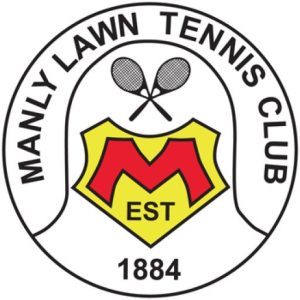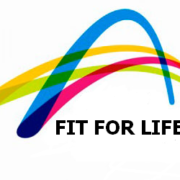We often tell our players at the club that tennis is the world’s toughest sport.
In the beginning, they think we are kidding, but after reading the reasons laid out in this post they grow to appreciate just how tough our sport really is. Below are 15 reasons why tennis is the most psychologically demanding sport.
1) TENNIS IS AN INDIVIDUAL SPORT.
In tennis, you are all alone on the court. No one shares in the glory or the blame. There is no teammate to pass off to if you are playing poorly and you cannot be taken out of the game for a while you recuperate from your poor play.
2) NO COACHING IS ALLOWED.
Tennis is one of the only sports where young players are not allowed to receive any coaching. Except for a handful of exceptions like HS tennis, Zonal teams, or Davis Cup, nearly all tournaments do not allow for coaching. The no coaching restriction is unusual in sports and clearly forces young competitors to deal with the pressures and problems of playing on their own.
3) INTENSE PRESSURE AT A YOUNG AGE.
Many successful professional players have reported that the stresses of junior tennis were the greatest of their entire career. For example, Chris Evert has reported that she felt more pressure during her junior career than she did at any other time as a player. The junior player must deal with the same frustrations during tournament play as the adult, but with fewer resources and life experiences to handle them.
4) TENNIS PROVIDES NOWHERE TO HIDE.
Tennis players must remain in full view of spectators, regardless of how they perform. They may desperately wish to hide from the world but they cannot due to the structure and rules of the game. Embarrassment, discouragement, anger, choking, euphoria, they’re all there for everyone to see. Some players dislike this aspect of tennis while others embrace it. Either way, tennis provides little shelter for the emotions that accompany such an exciting game.
5) NO SUBSTITUTES / NO TIME-OUTS.
Many sports allow players to regain their composure or get back on track through the use of substitutions and time-outs. This is not the case in tennis. Players must stay in the game, regardless of how bad or uncomfortable things may get. This is particularly difficult considering that matches can be two or three hours in length.
6) ONE-ON-ONE COMBAT.
Tennis is similar to boxing. You have a real one-on-one opponent that you must defeat to emerge victorious. A match can quickly become a personal confrontation between opponents, especially if an opponent resorts to gamesmanship tactics. Such direct competition can fuel intense rivalries and threaten friendships in powerful ways among young players.
7) THE ACCURACY OF LINE CALLING.
Completely objective, professionally trained linesmen make mistakes all the time. And they are motionless and concerned only with one line. Expecting players in a match to call the lines with the same accuracy is at best unrealistic. Balls traveling at speeds over 50 miles per hour with fractions of an inch separating “out” from “in” provide distinct opportunities for conflict and controversy. Recent studies show that players are actually legally blind at the moment they land on the court when running, this is added to the fact that many matches can be dramatically changed with only one bad call, makes mistakes unavoidable and it is easy to see why tempers can flare. (Imagine what would happen if the batters in little league baseball were responsible for calling balls and strikes against themselves)
8) THE “HONOR” SCORING SYSTEM.
Unlike most other sports, in tennis, a player can take a point that is rightfully their opponent’s by deliberately calling a shot out that had fallen within the lines. The point can be the most important of the match, yet the call stands. There is nothing a player can do about it. Pressures associated with being cheated or being accused of cheating can place tremendous psychological strain on young players.
9) TENNIS REQUIRES TOUCH AND FINESSE.
Tennis is primarily a fine motor skill sport, meaning that it is comprised of many precise movements requiring “feel”. As such, these movements can be influenced significantly by subtle changes in emotion. Anger, fear, frustration, embarrassment, and other such emotions can be very disruptive to the delicate motor control needed in tennis skills such as serving and volleying
10) CONSTANTLY CHANGING CONDITIONS.
Changing temperature, wind intensity of light, court surfaces, balls, altitude, indoor/outdoor play, and equipment add to the depth of the competitive challenge in tennis. Players are forced to deal with changes such as these, many times within the same match. A player’s responses to these situations can provide an indication of their level of mental toughness. Those who are not affected by changes in conditions are often the ones who win.
11) LENGTH OF THE BATTLE.
Few sports require kids to concentrate and perform for as much as three hours at a time. It is not uncommon for 12-year old players to be required to compete in two singles matches and two doubles matches on the same day. Mental toughness and physical fitness become critical if a player is to become successful.
12) THE UNIQUE SCORING SYSTEM IN TENNIS.
The scoring system in tennis adds to the pressure a young player experiences. Unlike many other sports, there is no overall time limit. Play continues until one of the players wins two out of three sets. Consequently, there is no room for coasting on a lead or waiting for time to run out. Each player is always just a few points from a complete turn-around, and a lead is never safe. In contrast, if a basketball team is ahead by 30 points, they will almost certainly win, because their lead is too large to overcome within the time of the competition. In tennis, a player can be ahead 5-0 in the third set, lose two games, and immediately have reason to fear a loss and a huge comeback on their opponent’s part because there is no time clock to run out.
13) JUNIOR TENNIS RANKINGS.
Junior tennis establishes a clear pecking order very quickly through an intricate system of sectional and national rankings. For some young players, rankings become synonymous with self-esteem. They develop feelings of expectation, hope, and failure surrounding rankings, seeds, and titles. This can lead to a great deal of unhappiness if the player’s enjoyment is tied to winning and losing. If you’re one of the best players in 12 & under baseball players in your state, you still won’t ever be ranked so that you know if you are the 1st or 5th best player. But in tennis, you will know exactly where how you compare to your peers and friends.
14) “BIG vs. LITTLE” and “YOUNG vs. OLD”.
Another dimension of tennis is the fact that a nine-year-old child can successfully compete against a 14 or 15 year-old-teenager. A young girl of 14 may be capable of beating a seasoned veteran on the pro tour. Small can beat large, and young can beat old. A 12 year-old boy losing to a 9 year-old or a 6’3” boy losing to someone half his size can be extremely stressful.
15) TENNIS TRAINING CAN BE EXTREMELY EXPENSIVE.
Tennis training for the competitive player can be a very large expense for a family. Many times the pressures from these expenses can add additional stress to the young player who feels guilty if they are not winning because of all the money his parents are putting into his tennis.
Parents can quickly lose sight of what is important and begin to expect a “return” for their investment. This issue is one of the most frequently mentioned by families with players competing at the high national levels.
Despite all these difficulties, tennis is still the best sport for a child to play. It is the only sport that challenges players on the physical, strategic, and psychological levels. It is no coincidence that so many junior tennis players are the best students in their classes. The goal setting and work ethic needed to be successful in tennis are life skills that will help all players as they get older and enter society.
Even the difficulties experienced in junior tennis like dealing with an abusive or cheating opponent, are opportunities to learn life skills that will be an important advantage later in life. Few other sports offer as many of these types of learning opportunities.
Parents and coaches often make the mistake of wanting to get involved or “fix” on-court problems when they happen. The best thing to do is to recognize those episodes as opportunities to learn important life lessons. Children who develop the skills to deal with difficult people at an early age are usually far more successful.
























